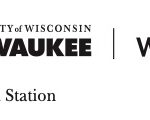
The University of Wisconsin-Milwaukee at Waukesha Field station was established in 1967 on 98 acres, and is located in the glaciated landscape of the Kettle Moraine area in Waukesha County, ten miles west of the UWM at Waukesha campus. The field station property was gifted to the university by Gertrude Sherman, who made a series of land donations to UWW between 1967-1970. The original farmland has been restored to a variety of native WI habitats, which now offer researchers, artists, students, other academics, and members of the general public a variety of ecosystems and landscapes for study, research, education, outreach and recreational use. The property contains rolling hills and glacial features such as moraines, a small lake (Henrietta Lake) with associated wetlands, an ephemeral pond, a cold-water stream (Scuppernong Creek) and riparian corridor, an 18-acre natural oak-maple forest, and restorations on 30 acres of old corn field (oak savannah/prairie, and pine forests). Grassy field and shrub land make up the rest of the site.
The field station also has a long history of engagement with the arts–many a poem, painting, and pottery piece have been produced on site. One of the highlights of the station is its unique, Japanese-inspired, Anagama wood-fired kiln. The kiln was built into a hill at the station by university students and their instructors. Each spring students, professional potters, and instructors work together to fire the kiln. They prepare for months before the firing creating more than 1,000 pottery pieces and collecting and processing wood. They then fire the kiln at approximately 2,300 F for a period of five days. After the kiln cools for a week, it takes a full day for the pieces to be unloaded.
Education and Research
The UWM at Waukesha Field Station connects people of all ages to the land by providing a wide variety of educational and environmental experiences. It also encourages discovery through research and art for visitors at all levels of expertise.
- K-12 students participate in discovery science and artistic activities during field trips.
- UWM students from all three campuses experience education and research firsthand through coursework, internship opportunities, honors projects and independent study.
- Adults can take advantage of learning opportunities through UWM at Waukesha’s Continuing Education program.
- UWM faculty and staff use the station for course components, artistic endeavors, and research projects.
- Researchers from other institutions use the station as a research venue.
-

- North America
- W349 S1480 Waterville Rd
- Oconomowoc
- 53066
- United States
- Wisconsin
- 43
- 88
- schuelle@uwm.edu
- https://uwm.edu/waukesha/field-station/#contact
- 1967
- 2017
- Yes
- University of Wisconsin-Milwaukee
- 1500 N. University Dr.
- Waukesha
- 53188
- United States
- Wisconsin
- Teresa Schueller
- spiderteresa@yahoo.com
- Field Station Director
- 1500 N. University Dr, Waukesha
- Teresa Schueller
- schuelle@uwm.edu
- Teresa Schueller
- spiderteresa@yahoo.com
- spiderteresa@yahoo.com
- $0 - $50,000
- 1-100
- No
- Yes
- Yes
- 0
- 26-50
- Yes
- Yes
- On Grid
- 0-20 minutes
- Yes
- Undergraduate
- Yes
- Yes
- Yes
- Terrestrial
- Temperate Grassland
- 101-300 meters
- 301-750 meters
- C (temperate)
- Yes
- Rural
- Yes
- 20
- 10
- 70
- Year Founded
- 1967
- Year Joined OBFS
- 2017
- Size of Field Station (hectares)
- 1-100
- FSML Web Address
- https://uwm.edu/waukesha/field-station/#contact
- Private nonprofit organization?
- No
- Universities affiliated / Parent Organization
- University of Wisconsin-Milwaukee
- Federal, state, or local governmental partners?
-
No
- Member of the Virtual Field
- Yes

